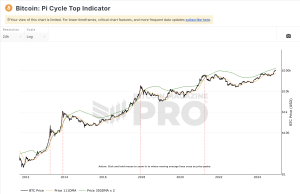Modifying Bitcoin’s Block Reward: A Technical and Consensus Challenge

Bitcoin, the first and most well-known cryptocurrency, operates on a decentralized network powered by open-source software.
This means that anyone can review, copy, modify, and distribute the code. Among the various parameters that could be theoretically altered in the Bitcoin protocol, the block reward is one of the most critical. It serves as the primary incentive for miners, who secure the network by validating transactions and creating new blocks.
However, changing the block reward is not merely a matter of adjusting some lines of code. It involves navigating the complex landscape of network consensus, understanding the economic implications, and considering the security of the entire system.
The Role of the Block Reward
The block reward is a set amount of bitcoins given to a miner who successfully solves the cryptographic puzzle required to add a new block to the blockchain. This reward, combined with transaction fees, provides the economic incentive for miners to contribute their computational power to the network. The Bitcoin protocol includes a mechanism known as “halving,” which reduces the block reward by 50% approximately every four years, a design choice intended to mimic the scarcity and deflationary properties of precious metals like gold.
The Challenge of Consensus
For any modifications to the Bitcoin source code to take effect across the network, a majority of its participants—including miners, node operators, developers, and users—must agree to adopt the changes. Achieving consensus on altering the block reward is particularly challenging. Such a change directly impacts the miners’ income and the underlying economic model of Bitcoin. Proposals to increase the block reward might face opposition due to inflation concerns, while suggestions to decrease it could be unpopular among miners for reducing their potential earnings.
Forks and Their Consequences
In instances where a proposed change divides the community, the blockchain can undergo a “hard fork.” This results in two diverging chains from the point of contention, each following its version of the protocol. Bitcoin Cash (BCH), created in 2017, is a prominent example of a cryptocurrency that emerged from a hard fork due to disagreements within the Bitcoin community over block size limits.
Maintaining Security and Integrity
The block reward mechanism is not only an economic incentive but also a crucial component of Bitcoin’s security model. By rewarding miners for their efforts, the system ensures that enough computational power is dedicated to maintaining the network’s security. Any adjustments to the reward structure must be carefully considered to avoid undermining the network’s integrity and making it susceptible to attacks.
Conclusion
While technically feasible to modify the Bitcoin source code to change the block reward, such a move requires more than technical expertise. It demands a deep understanding of the cryptocurrency’s economic model, a careful assessment of the potential impacts on network security, and, most importantly, the ability to achieve broad consensus among a diverse and global community of stakeholders.
The challenge lies not in the code itself but in navigating the intricate web of interests, incentives, and ideologies that define the Bitcoin ecosystem.



